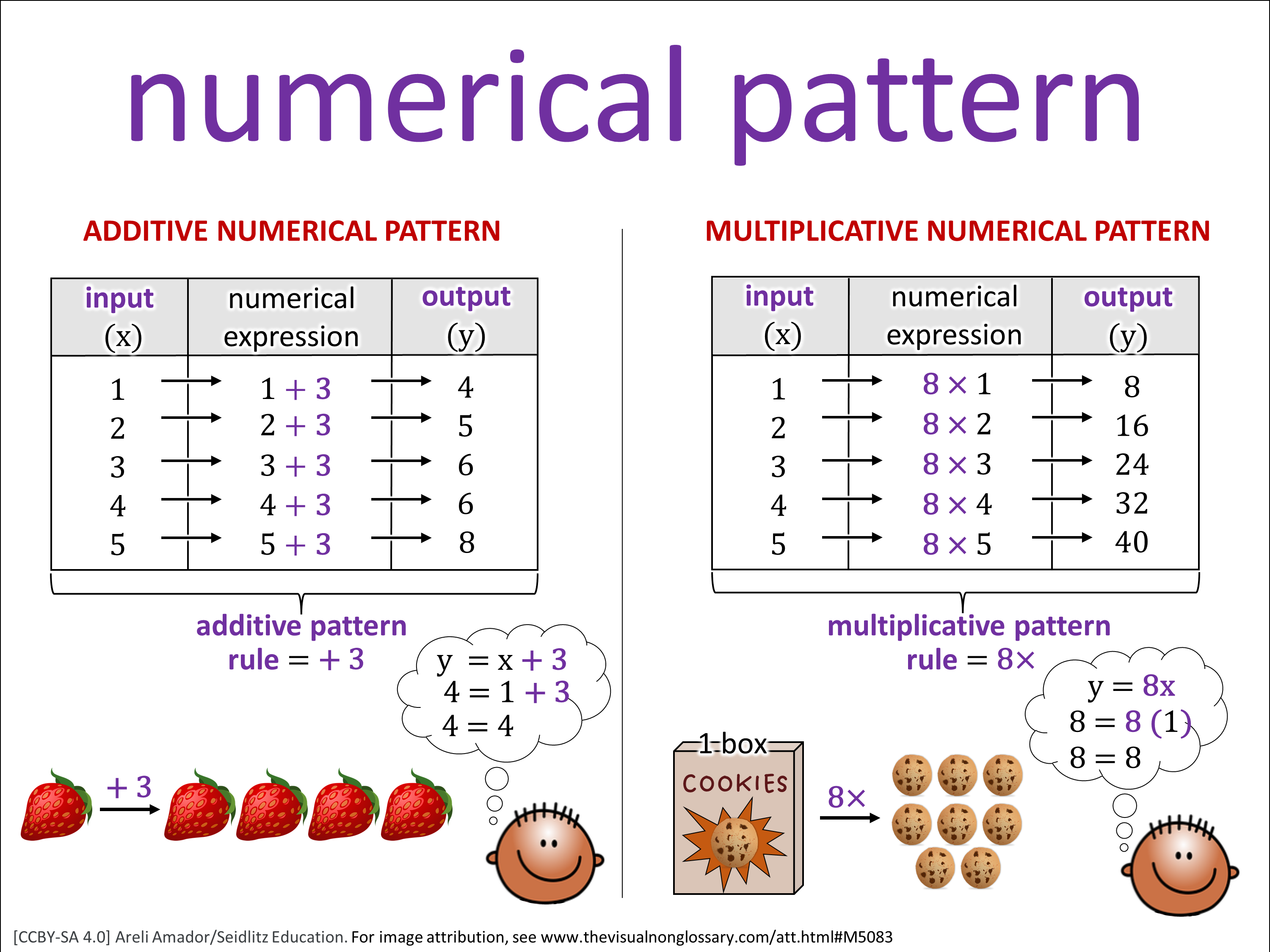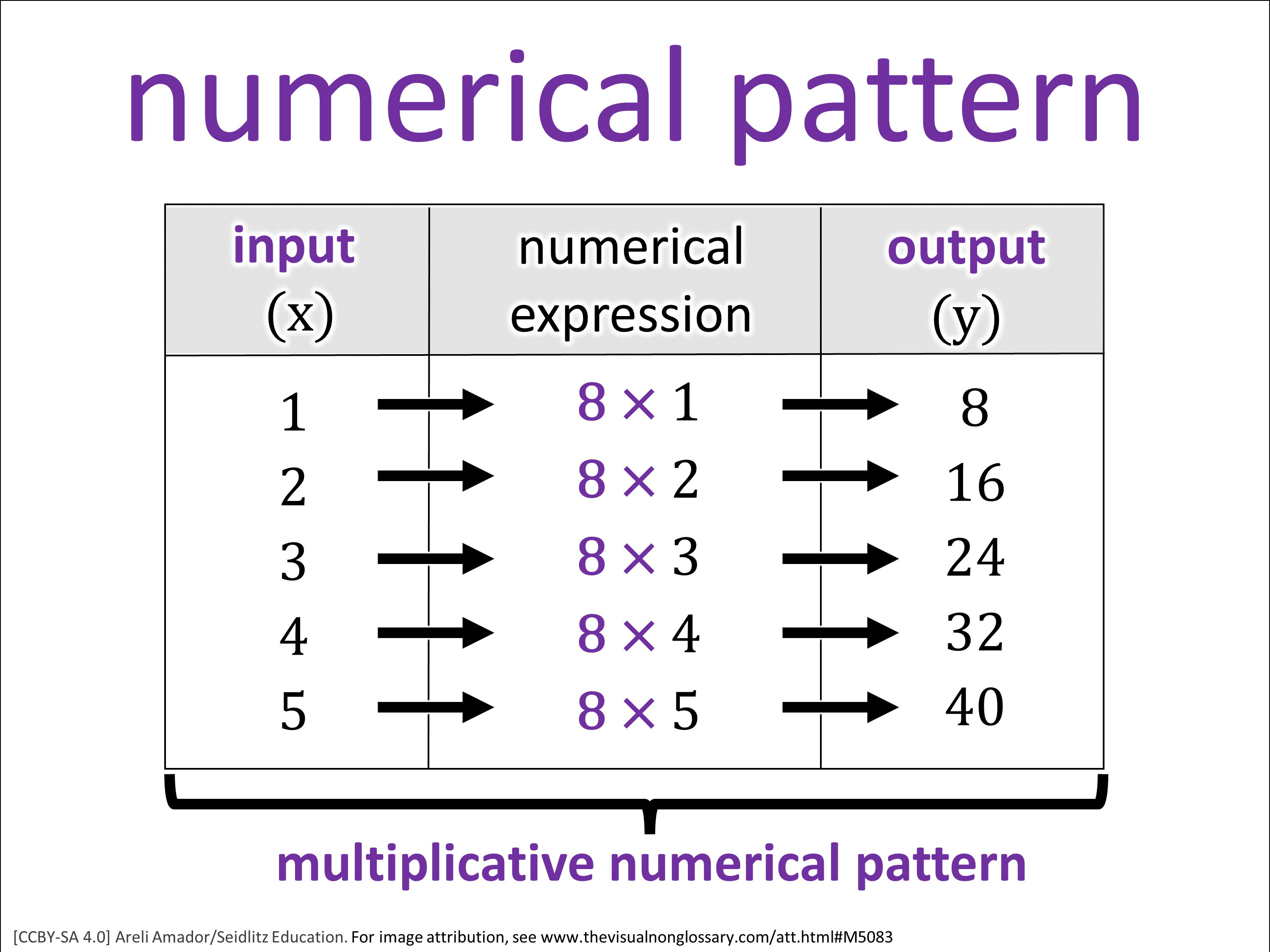numerical pattern: 5th Grade 🌐 Ver en Español
Algebra
Linear Equations
Vertical Alignment
TEKS:
| 4th | 4.5(B) |
| 5th | 5.4(C), 5.4(D) |
Downloads
- Visual
- Word wall visual
- Lesson Plan
- Lesson Materials
Structured Conversation Questions
Observational
What is a numerical pattern?
A numerical pattern is...Relational
How is a numerical pattern related to input/output tables?
A numerical pattern is related to input/output tables because...Inferential
How do numerical patterns help us understand the relationship between x and y coordinates on a coordinate plane?
Numerical patterns help us understand the relationship between x and y coordinates on a coordinate plane by...
Please log in to comment.
Students might notice in this visual:
- The numbers in the additive pattern are increasing by 3.
- The multiplicative pattern has much larger numbers.
- The rule for each pattern is shown above the table.
- The input and output labels help organize the numbers.
- Both patterns follow a consistent change.
EXTENDING THE DISCUSSION
After the observational question, randomly call on one or more students to share what they or their partner answered. Then ask the class, “Did anyone notice…?” using the suggestions above or anything else you’ve noticed.
After the observational question, randomly call on one or more students to share what they or their partner answered. Then ask the class, “Did anyone notice…?” using the suggestions above or anything else you’ve noticed.
Students might wonder:
- Why is the additive pattern increasing slower than the multiplicative pattern?
- What would happen if the input number was 10?
- Can a pattern be both additive and multiplicative?
- How do these patterns show up on a graph?
- What other rules could make a different pattern?
EXTENDING THE DISCUSSION
After students have shared what they notice, ask the class, “Did anyone wonder…?” using the suggestions above or anything else you might think is interesting or relevant to the lesson.
After students have shared what they notice, ask the class, “Did anyone wonder…?” using the suggestions above or anything else you might think is interesting or relevant to the lesson.
Example student responses
To the observational question, What is a numerical pattern?
LOW-LEVEL
A numerical pattern is a set of numbers that follows a rule.
HIGH-LEVEL
A numerical pattern is a repeated change in numbers based on a specific rule, and it helps us predict future numbers and see relationships in math.
RESPONDING TO RESPONSES
Emphasize and celebrate each student’s use of the key vocabulary to support a culture of “no wrong answers.”
Emphasize and celebrate each student’s use of the key vocabulary to support a culture of “no wrong answers.”



